
Traditional packaging lines, while effective for static production environments, struggle to adapt to new product types, fluctuating volumes, and changing market demands. These limitations can result in higher operational costs, extended downtime for reconfigurations, and reduced overall efficiency. This lack of adaptability can mean missed opportunities and lost revenue for growing businesses.
Enter flexible, semi-integrated automated packaging systems — a transformative solution designed to address these challenges. By embracing adaptability, these lines save time, reduce costs, and support scalability, making them an ideal investment for businesses looking to streamline operations and boost profitability. No matter how many units you produce each month, these systems grow with your business.
Why Flexible Packaging Lines Are Essential for Modern Operations
Flexible, semi-integrated packaging machines stand apart from their traditional equipment through their modular and adaptable designs. Unlike fixed systems that are tailored to specific product types and require extensive modifications to handle new packaging requirements, flexible lines are designed for versatility. They can adapt to various product shapes, sizes, and materials with minimal effort, allowing businesses to stay agile in a competitive market.
These lines leverage advanced technology, such as modular components and intuitive controls, to enable quick reconfigurations. For example, businesses that package bottles, cartons, and flexible pouches can rely on a single system to handle all of these formats efficiently. This flexibility reduces the need for multiple specialized machines and streamlines training for operators since one system can handle multiple tasks.
3 Benefits of Flexibility in Automated Packaging Systems
There are numerous advantages to investing in flexibility, making it an essential feature for businesses seeking to remain competitive.
![]()
1. Reduce Downtime
One of the biggest challenges with traditional packaging lines is downtime during reconfigurations. Flexible lines minimize this issue by allowing quick adjustments to accommodate different product types or packaging sizes. For example, a seasonal food product might require different packaging sizes than your typical year-round offerings. With traditional equipment, switching between these would result in hours of downtime. Flexible automated packaging systems eliminate these delays, keeping production moving efficiently.
![]()
2. Cut Costs
Adaptable lines significantly lower costs associated with frequent equipment replacements and labor-intensive reconfigurations. Instead of investing in entirely new systems to handle changing needs, businesses can make incremental adjustments to their flexible lines. This helps them save on capital expenses while maintaining operational efficiency. Additionally, flexible lines help reduce material waste, as their precise application minimizes labeling or sealing errors, which can be costly over time.
![]()
3. Increase Productivity
Flexible packaging lines enhance overall productivity by streamlining the changeover process and reducing bottlenecks. These systems can handle varying production speeds and packaging requirements without compromising efficiency, allowing businesses to meet customer demands faster and more effectively. For businesses experiencing rapid growth, this ability to scale production without delays is invaluable.
Empower Growth Through Scalable Packaging Lines
For businesses in growth phases, scalability and adaptability are critical to long-term success. Automated packaging systems provide the tools needed to support expansion and evolving market demands.

Seamless Scalability for Expanding Product Lines
Introducing new products or packaging types often requires significant equipment upgrades. Flexible lines eliminate this need by offering scalable solutions that can grow alongside a business. For instance, a cosmetics company might start with a few product lines but later expand into new markets with different packaging requirements. Flexible systems make this transition seamless, saving time and resources while maintaining quality.
Stay Ahead of Demand Fluctuations
Market demands can fluctuate, especially in industries with seasonal peaks. Flexible packaging lines allow businesses to scale production up or down as needed, ensuring they can meet demand efficiently without overinvesting in capacity during slower periods. For example, a beverage company might see a spike in demand during the summer months. Flexible lines can quickly adjust production volume, ensuring the company meets market needs without sacrificing efficiency.
Streamline Operations and Maximize Productivity
Flexible systems reduce the need for constant reconfigurations, freeing up resources for other critical tasks. Businesses can allocate their workforce more strategically by optimizing labor and minimizing downtime, driving overall operational efficiency. Teams can focus on innovation and quality assurance rather than being tied up with constant equipment adjustments.
Finding a Packaging Solution That Scales With You
To select the right packaging line, you must carefully consider your current and future needs. Here are some key steps to guide your decision-making process.

Assess Your Packaging Needs
Understanding your production requirements is the first step. Evaluate your current product types, packaging sizes, and expected growth to determine whether an automated packaging system aligns with your needs. Consider factors like the type of materials used, from rigid glass bottles to lightweight pouches, and the need for precision labeling or sealing.
Integrate Packaging Lines With Current Systems
Transitioning to a flexible packaging line does not have to mean starting from scratch. Look for systems that integrate seamlessly with your existing equipment to minimize disruptions during implementation. For instance, modular components can often be added to an existing production line, allowing businesses to upgrade without halting operations entirely. This ensures a smoother transition and faster realization of benefits.
Maximize Your Investment
While flexible packaging lines may require an initial investment, the long-term savings and efficiency gains often outweigh these costs. Assess the potential ROI by considering reduced downtime, lower reconfiguration expenses, and the ability to scale production without major equipment upgrades. Additionally, businesses can future-proof their operations by investing in systems designed to accommodate evolving market trends.
Stay Competitive With Flexible Packaging Solutions
Flexible, semi-integrated packaging machines are a smart investment for businesses seeking to reduce costs, increase efficiency, and support scalability. By addressing the limitations of traditional systems, these adaptable solutions empower businesses to stay competitive in ever-changing markets. Whether you are handling seasonal demand fluctuations or scaling your operations for long-term growth, flexibility is key
If you are ready to optimize your packaging process, explore Pack Leader USA’s flexible packaging solutions to find the perfect fit for your unique needs. Download our “Practical Guide to Choosing Labeling Equipment” to learn more about making the right choice for your business and future-proofing your production line.
.webp?width=200&height=135&name=2x-Packleader-logo-large%20(1).webp)

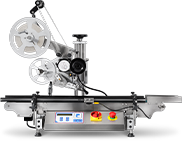
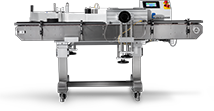
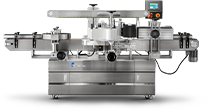
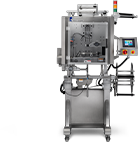
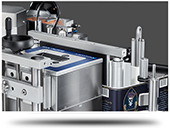
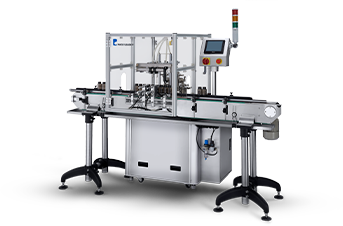
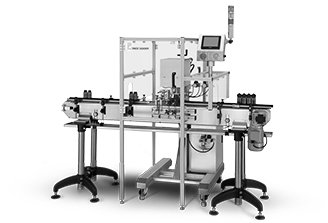
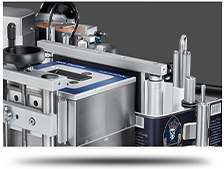





.webp?width=360&name=2x-color-logo%20(1).webp)